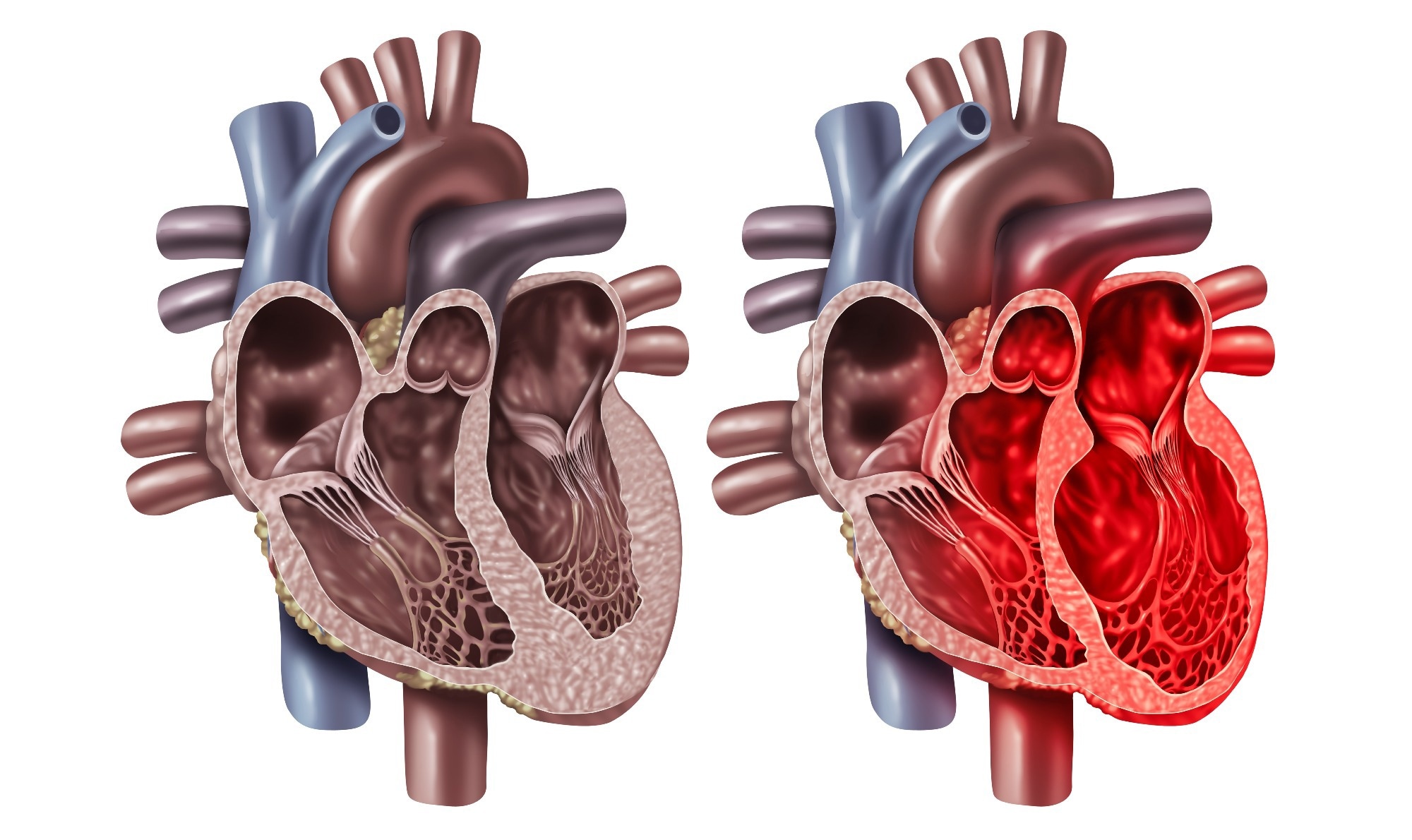New research reveals takotsubo cardiomyopathy remains a major cause of in-hospital deaths and complications, with men facing more than twice the risk and outcomes worsening during the COVID-19 era.

Study: High Mortality and Complications in Patients Admitted With Takotsubo Cardiomyopathy With More Than Double Mortality in Men Without Improvement in Outcome Over the Years. Image Credit: Lightspring / Shutterstock
In a recent study published in the Journal of the American Heart Association, researchers assessed the incidence of takotsubo cardiomyopathy (TC) and related complications in the United States (US). TC is a reversible left ventricular dysfunction triggered by physical stress, mainly in males, or emotional stress, primarily in females. TC shows racial and sex disparities, and it continues to remain a significant cause of in-hospital morbidity and mortality. Despite being traditionally viewed as a transient condition, the study underscores persistent risks of severe complications and mortality.
About the study
In the present study, researchers examined the incidence of TC and related complications in the US. They used the Nationwide Inpatient Sample (NIS) database, which includes weighted and unweighted data for about 35 million and seven million hospitalizations, respectively. TC cases were identified using the ICD-10 code I51.81. However, the study relied on ICD-10 codes, which may be subject to coding errors and did not differentiate between TC subtypes (e.g., reverse-type TC). TC patients aged at least 18 years between 2016 and 2020 in the NIS database were included.
The primary outcomes were cardiogenic shock, myocardial rupture, congestive heart failure (CHF), atrial fibrillation, stroke, and cardiac arrest. Patient and hospital demographic data included age, ethnicity or race, sex, median household income, hospital bed size, hospital region, mean length of hospital stay, hospital teaching status, mean total charges, expected primary payer, and control of hospital.
Proportions and 95% confidence intervals (CIs) were computed for categorical variables, and odds ratios and 95% CIs were estimated for continuous variables. Five-year outcome data were evaluated. A chi-squared analysis was performed to assess categorical outcomes. Multivariable linear regression was used to evaluate the association between length of hospital stay and independent variables.
Findings
Between 2016 and 2020, out of over 148.7 million total weighted population in the NIS database, 199,890 patients were hospitalized with TC. The annual incidence of TC did not exhibit a consistent trend, but increased overall from 39,015 cases in 2016 to 41,290 in 2020. The mean age of TC patients was 67 years. Most patients were female (83%) and White (80%). TC incidence increased in all age groups between 2016 and 2020, but was consistently the highest in those aged over 61. A notable surge occurred in the 46–60 age group compared to younger adults (31–45 years), which researchers attributed to accumulated stressors, under-treated cardiovascular risks, and hormonal changes in middle age.
White individuals had the highest TC incidence rate, followed by Native Americans, whereas Black people had the lowest incidence. Socioeconomic factors varied significantly, such as hospital bed size, primary payer, and median household income. TC patients had larger hospital bed sizes and higher household incomes. Most patients were on Medicare; TC rates were the highest in private non-profit and urban teaching hospitals.
TC patients had a high burden of cardiovascular complications, including atrial fibrillation (20%), CHF (36%), cardiogenic shock (6.6%), stroke (5.3%), and myocardial rupture (0.02%) compared to non-TC patients. TC patients also had a higher mortality (6.58%) than non-TC patients (2.4%), with an odds ratio of 2.86 for mortality. Further, TC patients had higher odds of cardiogenic shock, CHF, cardiac arrest, and myocardial rupture. The 1.5% mortality increase from 2019 to 2020 coincided with the COVID-19 pandemic, which prior studies associate with heightened stress-induced cardiac events.
TC patients had a slightly higher odds of atrial fibrillation and were also twice as likely to experience a stroke. Notably, the incidence of some complications increased over the years, while others, such as atrial fibrillation and myocardial rupture, remained stable. For instance, mortality rates increased from 5.6% to 8.3%, stroke incidence increased from 4.9% to 5.9%, and CHF incidence grew from 34.7% to 37.6%, among others.
While mortality based on sex was stable over time, it was double in males (11.2%) compared to females (5.5%). Researchers emphasized that hormonal differences, particularly lower estrogen levels in men and postmenopausal women, might explain this disparity, as estrogen has shown protective effects in animal models of stress-induced cardiomyopathy. The multivariable analysis found that TC was associated with all-cause death, adjusted for age, ethnicity or race, sex, hypertension, diabetes, hyperlipidemia, smoking, chronic obstructive lung disease, and chronic kidney disease. The median length of hospital stay for TC patients was four days, consistent throughout the study period.
Multivariable linear regression showed that large hospital bed size, Native American race, Medicaid insurance, Black race, and Asian race were associated with longer hospital stays. Conversely, female sex, older age, private insurance, treatment in the South, West, or Midwest regions, and private non-profit hospital ownership were associated with shorter hospital stays.
Conclusions
Taken together, the data indicate that individuals with TC are at a significantly elevated risk of various cardiovascular complications. Males have higher mortality than females. Notably, no improvements were observed in complications throughout the study years. The study’s limitations include reliance on administrative coding (which may overlook TC subtypes) and potential duplicate entries from hospital transfers or readmissions. Further research on improving and managing care is required to augment outcomes for these patients.
Journal reference:
- Movahed MR, Javanmardi E, Hashemzadeh M. High Mortality and Complications in Patients Admitted With Takotsubo Cardiomyopathy With More Than Double Mortality in Men Without Improvement in Outcome Over the Years. Journal of the American Heart Association, 2025, DOI: 10.1161/JAHA.124.037219, https://www.ahajournals.org/doi/10.1161/JAHA.124.037219